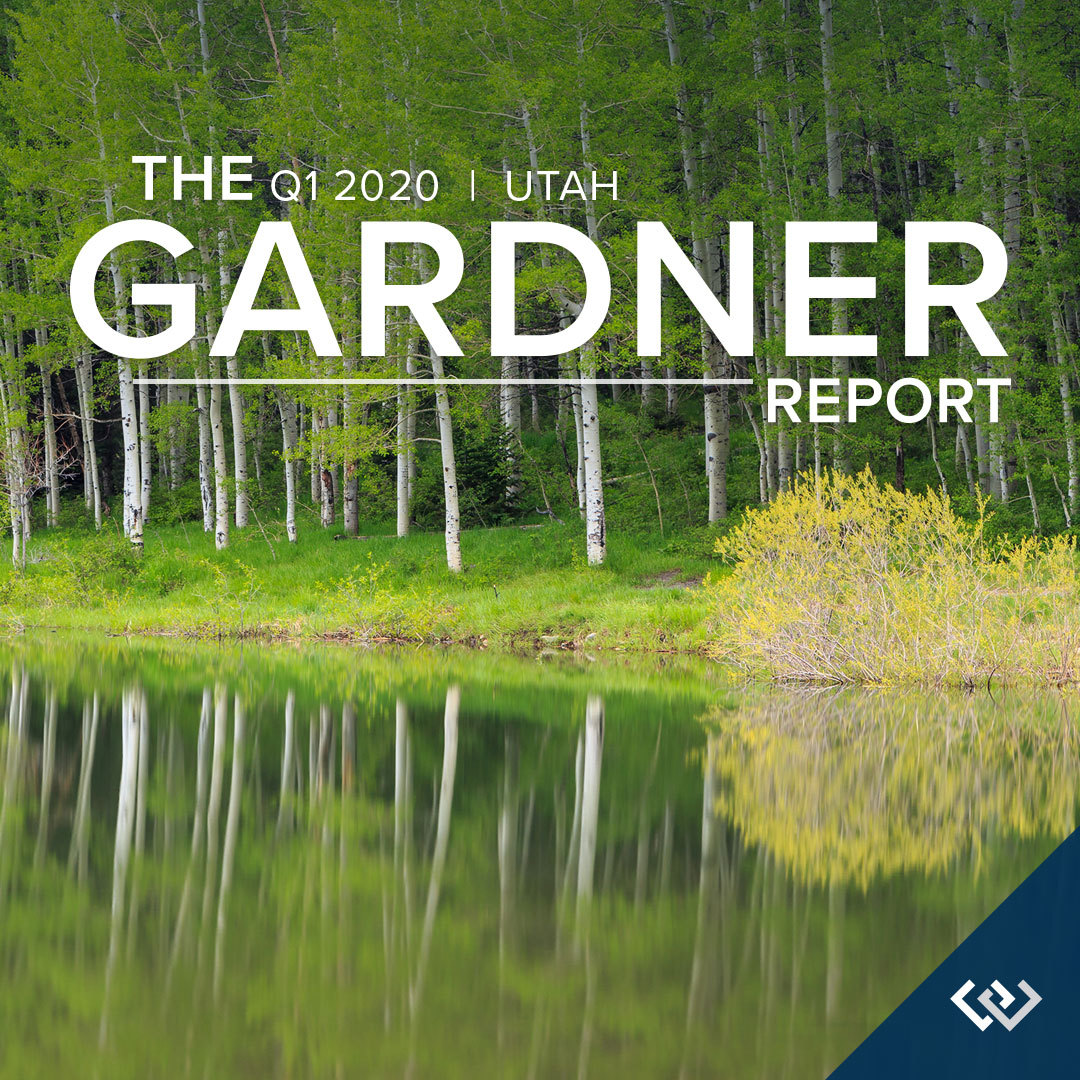Utah’s Housing Shortage: How Did We Get Here?

When the pandemic first began there was a sense of concern for the real estate market as fears of another market crash arose. Earlier in the year, we did see a dip in the market locally and nationwide. We are now seeing a surge. Why is this happening? Well, it is a combination of a few different factors, supply, mortgage rates, and location.
Utah’s Perfect Storm
The Utah market has seen a massive surge this year. The demand for homes was already high pre-pandemic. As the year goes on, we are only seeing an increase in that demand. We are only seeing houses stay on the market for a median of 12 days. It takes half the time to sell a house today than it did last year. In the month of August 2020, 5,201 total homes were sold with a median price of $362,000.
The only downside we are seeing to this massive surge is the lack of inventory. While we have seen in the past that Utah has had a problem with inventory, and that problem has been heightened during this current time. When we compare the data from this August compared to last year, we can clearly see this shift. The market now has more pending sales than it has houses on the market, while last year it was the reverse scenario.
Utah has seen an increase in the number of people wanting to move here for various reasons, this increase in population, and the fact people are staying in their homes longer has led to a market where there are more buyers out in the market then there are sellers.
Inventory
It’s not only Utah. We see similar trends across the country. The demand for real estate in the Utah market is increasing, but the inventory is starting to dwindle. To put it simply, homes are selling too quickly for the market to keep up. Specifically for Utah, there are 5,184 active listings and 9,995 pending sales. There is a 3 month supply at the current sales pace, which is well below the 6-month pace needed to keep a balanced real estate market. The national housing inventory has seen a decline including decreases in the inventory of newly listed properties. Due to this shortage, homes are selling up to 18 days faster than the year prior. There has also been an increase in the average price of a sale; 8.5% more than last year.
Even though we see a limited supply in the housing market, there is still a strong demand for the buyer’s side.
Mortgage Rates
The biggest reason that people are so willing to buy homes at this time is because of the interest rates. According to Windermere Chief Economist Matthew Gardner, In the August reports, for a 30yr fixed-rate mortgage, the interest rate is at a shockingly low rate of 2.9%, last year the rate was sitting at 3.73%. These are historically low numbers.
With the housing prices rising and the interest rates being so low, you have to look at the difference between the price and the actual cost of the houses you are buying. Even though the house price is higher, with lower interest rates, the monthly mortgage payments are still comparable. With lower rates, it costs less to borrow money from lenders to get the money for your house. This means that buyers may be able to afford more house than initially expected, and is pulling buyers onto the market.
Why Does This Matter?
This high demand for homes is predicted to continue on throughout the year, and possibly carry over into 2021. On the buyer’s side, we see historically low-interest rates, which can help counteract the rising price of houses. On the other side, sellers are getting more for their listings than before with the increasing price of houses, and heavy demand will decrease the time needed for your home to sell. The main issue on hand is the housing shortage, and only time will tell how that will affect the market in the long term.
For weekly updates on the housing market, keep an eye on the Windermere Utah Facebook page, as every Monday we post “Mondays with Matthew,” a video update from our Chief Economist about the market.
The Gardner Report – Utah – 2020 First Quarter

The following analysis of select counties of the Utah real estate market is provided by Windermere Real Estate Chief Economist Matthew Gardner. We hope that this information may assist you with making better-informed real estate decisions. For further information about the housing market in your area, please don’t hesitate to contact me.
A MESSAGE FROM MATTHEW GARDNER
Needless to say, any discussion about the U.S. economy, state economy, or housing markets in the first quarter of this year is almost meaningless given events surrounding the COVID-19 virus.
Although you will see below data regarding housing activity in the region, many markets came close to halting transactions in March and many remain in some level of paralysis. As such, drawing conclusions from the data is almost a futile effort. I would say, though, it is my belief that the national and state housing markets were in good shape before the virus hit and will be in good shape again, once we come out on the other side. In a similar fashion, I anticipate the national and regional economies will start to thaw, and that many of the jobs lost will return with relative speed. Of course, all of these statements are wholly dependent on the country seeing a peak in new infections in the relatively near future. I stand by my contention that the housing market will survive the current economic crisis and it is likely we will resume a more normalized pattern of home sales in the second half of the year.
HOME SALES
- In the first quarter of 2020, 6,996 homes sold, which was a solid 5.1% increase compared to the same period in 2019. Sales were down 20.2% compared to the fourth quarter of 2019.
- Total sales activity rose in all counties covered by this report. Year-over-year sales rose by double digits in three counties, with impressive increases in the relatively small Wasatch County.
- The number of homes for sale in the first quarter was down by 24.2% compared to the same period a year ago and was 27.2% lower than the fourth quarter of 2019. Clearly COVID-19 has had an impact on prospective home sellers.
- Pending sales in the first quarter were up 2.6% compared to the fourth quarter of 2019, suggesting that buyers are still in the market even though listing inventories are very tight.

HOME PRICES
- The average home price in the region continued to rise in the first quarter, with a year-over-year increase of 10.4% to an average of $404,316. Prices were a modest 0.3% higher than in the fourth quarter of 2019.
- All counties contained in this report saw price increases compared to the same period a year ago.
- Appreciation was strongest in Wasatch County where prices were up 37.9%. However, this is a small area and can be subject to significant swings in sale prices.
- The takeaway here is that home prices continued to appreciate at considerable rates during the quarter. The big question will be whether this continues as we move through the economic slowdown created by COVID-19.

DAYS ON MARKET
- The average number of days it took to sell a home in the counties covered by this report dropped five days compared to the first quarter of 2019.
- During the first quarter of the year, it took an average of 59 days to sell a home in the region, up by 2 days when compared to the fourth quarter of 2019.
- Homes sold fastest in Davis and Salt Lake counties, and slowest in Summit and Wasatch counties. That said, it took 23 fewer days to sell a home in Summit County than it did a year ago.
- Market demand appeared to remain quite robust during the first quarter of this year.

CONCLUSIONS

This speedometer reflects the state of the region’s real estate market using housing inventory, price gains, home sales, interest rates, and larger economic factors.
Given the current economic environment, I have decided to freeze the needle in place until we see
a restart in the economy. Once we have resumed “normal” economic activity, there will be a period of adjustment with regard to housing. Therefore, it is appropriate to wait until later in the year to offer my opinions about any quantitative impact the pandemic will have on the housing market.
ABOUT MATTHEW GARDNER
 As Chief Economist for Windermere Real Estate, Matthew Gardner is responsible for analyzing and interpreting economic data and its impact on the real estate market on both a local and national level. Matthew has over 30 years of professional experience both in the U.S. and U.K.
As Chief Economist for Windermere Real Estate, Matthew Gardner is responsible for analyzing and interpreting economic data and its impact on the real estate market on both a local and national level. Matthew has over 30 years of professional experience both in the U.S. and U.K.
In addition to his day-to-day responsibilities, Matthew sits on the Washington State Governors Council of Economic Advisors; chairs the Board of Trustees at the Washington Center for Real Estate Research at the University of Washington; and is an Advisory Board Member at the Runstad Center for Real Estate Studies at the University of Washington where he also lectures in real estate economics.
 Facebook
Facebook
 Twitter
Twitter
 Pinterest
Pinterest
 Copy Link
Copy Link